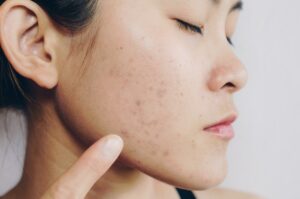
Explaining the Treatments Available for Nearsightedness
Myopia, also known as nearsightedness, affects millions of individuals worldwide. It is a refractive error that causes blurred vision of distant objects when light rays focus in front of the retina (at the rear of the eye). Nearsightedness can, fortunately, be corrected.
Do you occasionally ponder your best treatment options for nearsightedness? Let’s examine the most prevalent treatment options.
Eyeglasses
Eyeglasses are the easiest and most common way to correct myopia, particularly in children. Optical lenses alter the angle at which light strikes the retina. To determine the exact prescription for your lenses, an optometrist or ophthalmologist uses eye charts, focus exercises, and a multi-angle examination of your eyes to determine your vision.
Contact Lenses
Vision tests and eye examinations will determine the prescription for your lenses, just as they do for spectacles, and contact lenses correct your vision by altering the direction of light entering the eye. The natural secretions of the eye permit contact lenses to float on the cornea. Due to the proximity of the lenses to the cornea, they can be significantly thinner than eyeglass lenses. There are various varieties of contact lenses:
● Soft lenses are made of extremely malleable soft plastic that flexes and adheres to the eye’s surface easily (soft lenses may be simpler to adjust to than rigid ones). They typically encompass a larger portion of the eye, including the pupil, iris, and the white. Some soft lenses are intended to be removed, cleaned, and stowed overnight. In contrast, others are intended to be discarded after being worn several times or for a certain amount of time, ranging from one day to several weeks.
● Rigid gas-permeable lenses are smaller lenses extending into the iris and encompassing the pupil. As the name suggests, they are made of thin, inflexible plastic and resemble small saucers when held on a fingertip. Additionally, they float on your tears and transport oxygen to the surface of your eye. Occasionally, a particle of dust or an eyelash will become lodged between the lens and the eye, necessitating the lens’s removal, cleaning, and replacement. In general, they are not intended for sleeping, although there are extended-wear styles that permit this.
LASIK
Both eyeglasses and contact lenses provide daily, quick vision correction. However, they must be routinely cleaned and replaced; without them, your vision will be impaired. For permanent correction of myopia, you should consider refractive surgery, which irreversibly alters the eye and usually eliminates the need for daily corrections. Examples include:
● LASIK surgery: You have likely heard of LASIK (laser-assisted in situ keratomileusis), the most common eye surgery procedure that can correct myopia and other refractive errors. This form of surgery modifies the cornea – the front, spherical portion of the eye – so that light can pass through it and reach the retina correctly.
● PRK: Photorefractive keratectomy is similar to LASIK but does not involve cutting a corneal flap. In this procedure, the laser directly modifies the eye’s surface to rectify its shape. Those with corneas that may be too narrow for LASIK surgery may benefit more from PRK.
● Implantable contact lenses: Individuals with the greatest degree of myopia should consider implantable contact lenses. During this procedure, a prescription lens is positioned either between the cornea and the iris or behind the iris.
● Cataract Surgery: As time goes, the natural proteins in a person’s eye can begin to form a clump or cloudy region on the natural lens, requiring surgical intervention. This typically causes vision distortion and loss in individuals over 40. During cataract surgery, an ophthalmologist/surgeon removes the cloudy lens and substitutes it with a new, clear lens. Replacement lenses can be made to prescription specifications to correct myopia in nearsighted individuals.


